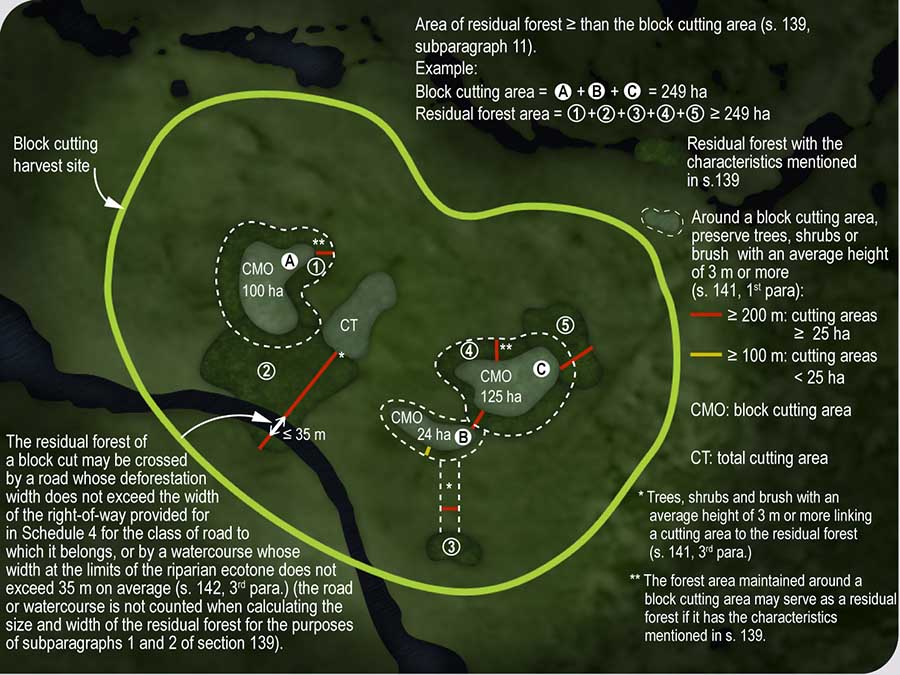Chapter VI – Allocation of forest operations and residual forest
Division II – Special provisions applicable to the bioclimatic domains of the sugar bush and the balsam fir forest
§3. Block cutting
Section 142
The residual forest of a block cutting must be preserved inside the limit of the harvest site until it may be harvested. It may be harvested only on the expiry of a 10-year period after the date on which block cutting was carried out or, if the regeneration has not yet reached after that period the average height of 3 m, until that regeneration has reached such a height.![]()
1
Objectives
- To distribute cutting areas and residual forest areas in space and over time
- To allow wildlife to move around by maintaining connectivity between its habitat and the neighbouring residual forest
- To maintain the components of the forest cover that provide shelter for wildlife
The first paragraph does not apply to the following sylvicultural treatments carried out in a residual forest:
- a commercial thinning or selection cutting carried out according to the applicable sylvicultural prescriptions;
- a partial cutting in a mature tree stand or in a stand that will reach maturity in less than 15 years where not more than 35% of the marketable basal area of the stand is harvested, provided that after harvesting, a marketable basal area of at least 15 m2/ha of well-spaced trees composed of species and proportions similar to those of the initial stand, is maintained.

2
Objective
- To allow for the harvesting of timber
Figure 139 Size and composition of the residual forest at a block cutting harvest site
A residual forest of a block cutting may be crossed by a road whose deforestation width does not exceed the width of the right-of-way provided for in Schedule 4 for the class of road to which it belongs or by a watercourse whose width at the limits of the riparian ecotone does not exceed on average 35 m. At the time of indicating a residual forest in the integrated forest management plan, neither the area nor the width of the road or the watercourse may be considered in calculating the area and the width of the residual forest for the purposes of paragraphs 1 and 2 of section 139.![]()
3
Objective
- To allow certain forest development activities in or near a particular place
Additional information
For road classes 1 to 5 and for unclassified roads, the maximum right-of-way width is established according to the width of the roadway and road shoulders. To determine the maximum right-of-way width, i.e., the maximum width that may be cleared, refer to Schedule 4. The schedule sets out right-of-way widths for winter roads, motorized all-terrain vehicle trails and trails for other uses. Other than right-of-way, roadway and shoulder width, all other characteristics given in Schedule 4 are for information only and are not provisions to observe in the application of this section.
Subsections 1 and 2 of section 139 state that the residual forest of a block cutting must have the following characteristics:
- have, inside the limit of the block cutting harvest site, and area at least equivalent to the area of the cutting areas of a block cutting;
- have a width of at least 200 m.

